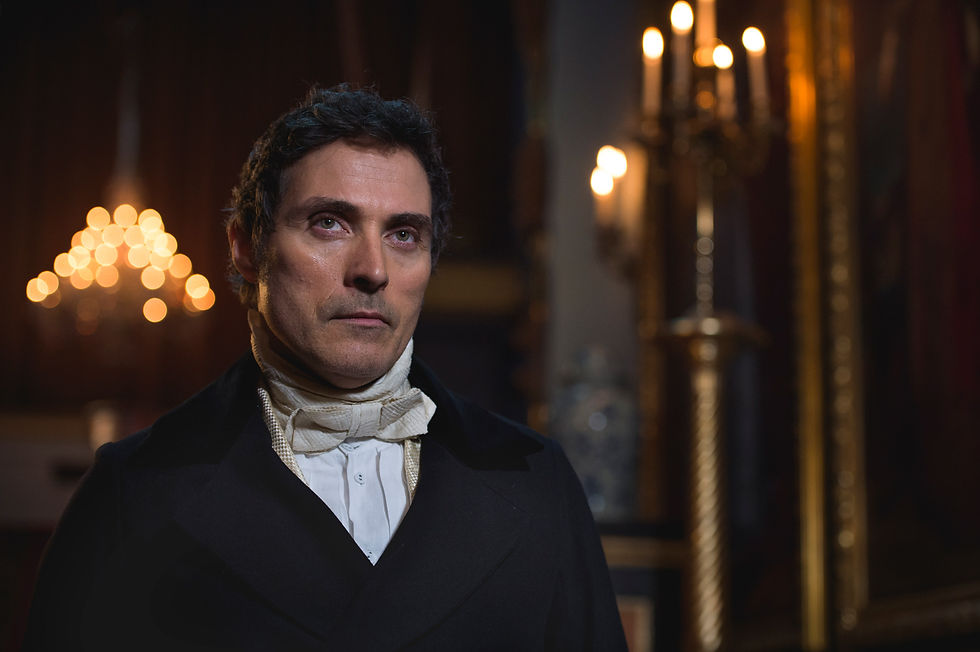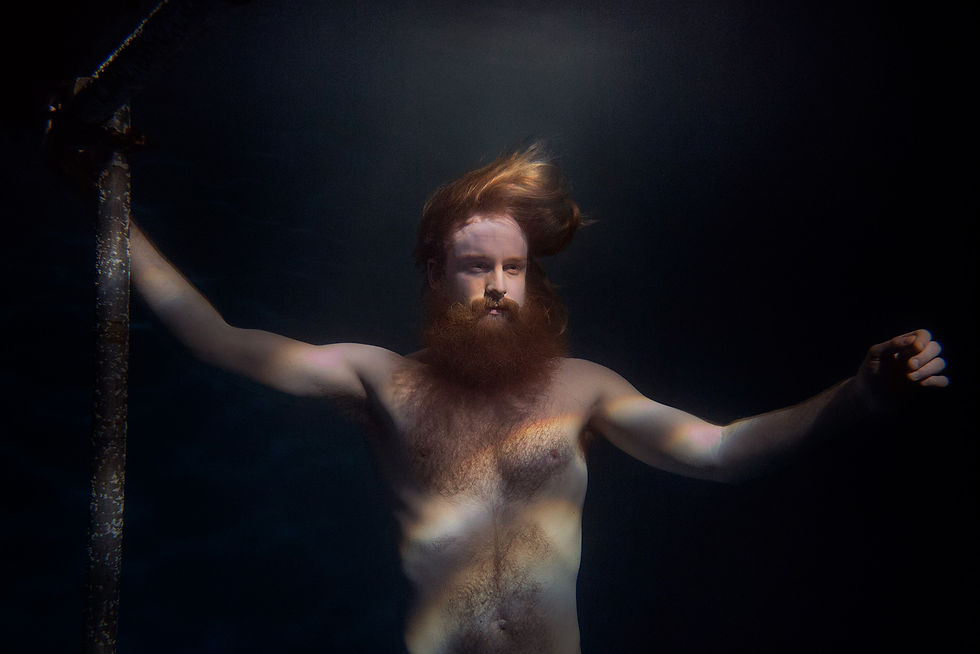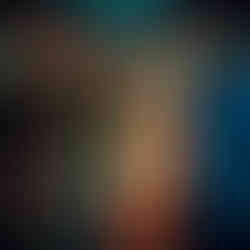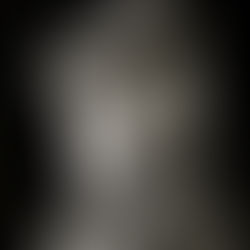Conversations...with Unit Stills Photographer, Gareth Gatrell
- Lindsey Bowden
- Apr 4, 2020
- 15 min read
Updated: Apr 24, 2020

At 16 years old, a friend introduced me to her new boyfriend. He was handsome, funny, with infectious positive energy. We had a lot in common and I found him a joy to be around. I didn't see him much after we all left school, as everyone began their lives, and I moved to London quite young.
Around 7 years ago we bumped into each other at a friend's party and reignited our friendship over his mum's delicious banana bread (He is seriously the only person I know who would bring banana bread to a party). He told me he was a photographer, wanting to move more into TV and Film and stills photography, which he has done.
He is a fine example of someone who has got his head down, worked hard and climbed the ladder. Now, in 2020, he's one of the best in the business and has worked on top shows such as Victoria, Killing Eve and the new Red Dwarf. Here is my friend, Gareth Gatrell.
Lindsey Bowden (LB)
Hey G, Thanks for sitting down and having a chat, it's good to see you.
Gareth Gatrell (GG)
Of course darling, always, anything for you bambino.
LB
Thanks man. So, for anyone who isn't sure, can you explain what a Unit Stills Photographer is?
GG
Yes, a Unit Stills Photographer is somebody who graces a TV or Film set and provides imagery for the publications and publicity to promote and sell the project we are working on. So that could be anything from shooting front covers for magazines, behind the scenes photography to show how the budget is spent, or it could be poster work which would be used for billboards and cinema releases.

LB
Was photography in Film and TV always the main goal for you?
GG
No, it was a case of enjoying photography at college, to begin with. This sort of job was not really known to the people outside of the industry until digital photography came along, although it had been going on for many, many years before that. I guess really, I just started snapping away at anything to start the journey.
LB
Yep, finding out what kind of photographer you were. So how did you make the move into TV and Film?

GG
Well, going back to my college years, I was the class clown as you know.
LB
I do!
GG
Well as you know, I didn't really have an interest in school, apart from football which I loved. I've always been quite creative but was never an artist or photographer at school as it wasn't really available to me then. But when I went to college, I decided to do photography and art as I thought it would be easy, whilst indulging my creativity! Luckily, I had a lecturer who believed in me and allowed me to be me. His name was Anthony Jankowski.
LB
That's a great name.

GG
It is a great name! He was very patient, quite young, but solid, and accepted my class clown personality and allowed me to be more practical. I didn't study as hard as I should have done, but I also felt that photography isn't something to be creatively taught, you need to just do it. But I did go on to University, as it was free back then, still with no clear idea what field I wanted to do. They didn't do photography, so I did three dimensional studies, which wasn't for me. So, at that point I decided to go and live in Gran Canaria for 6 months with my girlfriend at the time, our mutual friend Clare Evers.
LB
Yes, I remember that! Shout out to Clare Evers. One thing I just want to touch on that you said there, was how your lecturer allowed and encouraged you to be yourself, which is so important as a creative. There's no point trying to make us into something we're not!
GG
Yep I completely agree. Sometimes society wants to sculpt us into a certain way but it's important to be true to yourself. Every year I go back to my college and give my time as a thank you to Anthony who allowed me to grow and be myself.

LB
That's wonderful. It's important to pay it back as it were. I did the same thing actually a few years ago, and went back to my first stage school and taught for free. For me, it was also giving back to the city who paid for my drama school training in the first place. It's these places that built your character which is the foundation of you and your career.
GG
Totally. Without Anthony and his calm leadership I wouldn't be where I am today, and although neither of us are yet where we aspire to be, it's ok, as me doing my job and you doing yours, and also doing these blogs and every other creative thing we do, is all part of the journey.
LB
100% agree, you have to stay productive. What I love about this industry, and this is probably true of a lot of industries, is that you never stop learning. This industry moves so quickly that you have to keep up, and there are always lessons to be learned.
GG
Yes, and we've all got to start somewhere. You've got to get out of the door and start walking. Be open and aware to little opportunities that present themselves to you.

LB
Yep, I'm a big believer in that. So, with our jobs in the arts, there are periods of time where we're looking for the next job, but still have to earn a living. I've worked in a chocolate factory, been a London tour guide, and worked as a Victorian wench at the London Dungeon. What other jobs have you done in between photographising?
GG
Is that a word?
LB
It is not a word.
GG
I like it though. Now I'm picturing you in some London dungeon tied up or whipping people.
LB
Not that kind of dungeon.
GG
Oh.
LB
But I've done that too.

GG
(laughs). Well, I joined the Navy as a clearance diver, I sold cars, I sold commercial land into the millions, I scuba-dived around the world but I then landed the TV job that I thought would change everything and allow me to step forward into the high market, and that was Victoria. I badgered the hell out of the Picture Editor, Pat Smith, for that job, he's a legendary geezer. I phoned him up one day and he said, "You're a persistent git, but I like that" and offered me Victoria. I did Season 1 which filmed in Leeds and I thought that would lead to bigger things, and then it didn't, everything stopped. So, I went and cut grass for a living for a few weeks. It was backbreaking honest work, which I actually enjoyed as I got to be around people and I'm a real people person. I also liked seeing a job through from beginning to end quickly as with TV and Film the end product doesn't exist until a year or so down the line. But it wasn't what I wanted to do really so that actually gave me a kick up the arse to refocus, get my name out there, ring round those contacts and make new ones to get more photography work.

LB
Yeah, it's very hard to keep that momentum up, especially when you do get a job like Victoria and you think, finally, finally things are moving...and then they don't. It can be soul destroying but it is part of being in this business.
GG
Yes it's very up and down, and the problem with being a creative is we seek our value from third parties, and the problem with that is some people will give us a value of worth, some don't, and normally the people who do, don't pay our bills.
LB
Yes!
GG
Also, with being a freelancer, if you want to make proper money, it's advisable to become a businessperson as you are your own business. I've turned down jobs because the fee wasn't correct for my level of experience now. It's not that I think I'm too good for a project, it's because my experience is the value of my business.

LB
I completely understand that. Just going back to the business side of being a freelancer, most creatives are not natural business-minded people and they find that side of things, especially if they're a LTD company, pretty hard. That's something that's not really taught for an actor, we didn't learn anything like that at drama school, although I think they may touch on it now. It is definitely something you have to learn along the way, to be your own CEO.
GG
Oh god yes, you have to be a jack of all trades. There's no point in getting the big job if you can't negotiate the fee based on your value. You have to be the accountant, the promotor, the performer, it's all a performance. The hardest thing as a creative is to say no to a job because they aren't paying you what you are worth. But there is a bigger picture, and that's your sanity. You get to a point where you can no longer justify the long, long hours for very little pay, and the way you move on from that and earn what you are worth, is by saying no. Which is actually really scary as you are saying no to a revenue stream that allows you to eat! A lot of people can't do it for fear of not having an income, but you need to learn how to move forward. It's also so important to surround yourself with good, supportive, positive but level-headed people. Friends that will tell it like it is but also know how to do that. Telling someone they suck or should quit during a low time is not helpful.
LB
I think surrounding yourself with people who don't understand it and therefore are patronising or derogative is one of the most damaging things you can do to yourself. I’ve been told to quit, get a real job and that I live in a fantasy land!
GG
Yep, it’s awful, oh look Mum's bringing in a cup of tea!
LB
(laughs) Amazing! Hello mum!
Gareth's Mum
Hello Lindsey!
GG
She's my mum. I've got tea now! Yeah so, you know Lins, this creative journey, it's a hard one, and it's not for the faint-hearted. You have to be persistent, determined, get over the bad days and crack on.

LB
Very true. The business can be brutal. So, you worked on Victoria and also in the last few years you worked on Lucky Man with Jimmy Nesbit, and one of the biggest shows at the moment Killing Eve. Would you say there is a difference in working on a TV set to a film set?
GG
If you're working on a big budget film, like Jingle Jangle that I've just worked on, it had a £90M budget so you normally work one scene in an entire day, but with TV it's sometimes several scenes in a day, so it means that in TV, you're working very quick, you're under pressure to get the killer shots for publications, but with film, you know for certain parts of the scene, you can step away. Sometimes the actors don't want extra people on set as it can distract, particularly if it's an emotional scene, so you can always shoot that after once the scene is in the can, and that way you can get the best shot.
LB
Right, and do you have a particular project that was special for you to work on?
GG
There's been a couple. Victoria was very special because it was a huge opportunity. I went from shooting half a million pounds indie films to shooting a £3M per episode of Victoria. So, the production value was much bigger, and the stills looked fantastic because more money was being spent on costume, lights etc, but overall the one I feel most in my heart would be
Jingle Jangle which stars Forest Whitaker.
LB
One of my favourites.
GG
Ah man, he's just a phenomenal actor. He's quite a method actor, and as a photographer there is always a bit of fear with method actors as they don't like to break character one set for you to get the perfect shot. Not all actors want the photographer on set, some see it as a distraction, which I respect, but a photographer who is professional will not be bouncing around during the take. Once you're locked in position you don't move during the take. But yeah Forest Whitaker was incredible to work with, very giving and very humble. Also, the crew on Jingle Jangle were great to work with, and the director David E. Talbert, who is renowned for his theatre work, was an amazing director. He knew everybody’s name on set, from the runners upwards. Every day he would walk on set, grab the microphone and give lots of love and light to people to start their day.
LB
That’s wonderful, definitely looking forward to seeing that. So, when you have locked in the next job, do you have a process for how you approach each project?

GG
To be honest, unless it's something like a big action movie, the process is pretty much the same. Knowing what kit you need is vital. For Jingle Jangle I had to change my camera kit so I had a mirrorless camera - which is a camera that is silent when you take photos, no shutter sound. I needed something that could track dancers through crowds quite quickly. Sometimes we'll use cameras that have magic arms that support cameras on cranes which will allow me to remotely fire. Sometimes we're given a script which is good, but sometimes I just want a summary of each character and synopsis of the story. I sometimes find that if you read the whole of the story, your interpretation may be different to that of the director. I like things short, snappy and fast that inspire me. Often in TV you don't get the script, as you could be one of many photographers working on that project. You also need to make sure all your travel arrangements are catered for. I live on the South Coast, but all my work is in London, Manchester, Bristol or sometimes overseas. I normally have a chat with the DoP (Director of Photography) and the director about what they want. I don't like to be led too much by the director, but I like to get his thoughts. I'm on that set because they like the style of my photography.
LB
A lot of people think you’re on set, you do the job and that’s it. But there’s a big editing process after the actual shoot, right?
GG
Yeah, there is, but if you want to be a jobbing photographer in the world of film, you have to get that nailed down. You have to learn how to grade, work with colour, all the editing terminology, it’s a skill in itself. And it’s essential as sometimes the image at the time of shooting can be very flat, so the editing brings it to life.
LB
You mentioned earlier that your work may be used for the project’s poster. What else would your work be used for?

GG
Well, for something like key art photography, you would photograph the talent, sometimes against a green screen or blue screen, and we’re trying to get as high resolution shot as possible that can then be edited and used for posters or front covers, or editorial. In film and TV, we don’t just have the main film poster, we have character posters as well. Often, we have to create a pre-determined look, and art direct an actor in some certain moments. By front covers, I mean published work such as GQ, Empire Magazine, anything at all really. The behind the scenes shots are mainly used for the execs so they know how the budget has been used.
LB
So, if someone reading this is wanting to go down the route of stills photography for Film and TV, what would you say is the best route for them to try?
GG
Well, I think generally the way in is to work on short films. Most of these are generally not paid, but they give you a wealth of experience of both photography and being on set and the etiquette of that. It’s a great grounding where creative people do it for the love, so there’s no immediate pressure. You have to deliver, of course, but it’s a lot more of a giving family environment, rather than a very high-pressured situation. If you look at film funding platforms on social media or online, you can see what short films are around and about to enter production. Also make connections with DoP’s, directors, and you might be able to get a day here and there too. Learn to be patient. I thought I was ready 5 years ago to work on a £90M film, but now I know I wasn’t. You need to get your portfolio to a good standard before going for those bigger jobs. Be personable as well. Once your portfolio is up, looking vibrant and you’re feeling more confident, you can start approaching photo editors, production houses, publicity agents, all those people that you can source online. But try and pick up the phone rather than email, you want to be memorable. Big rule, never contact people unless you really have something positive to say about your work.
LB
That’s really good advice, especially about calling people rather than just email. You are an experienced diver and have now incorporated that into your work – can you talk a little about underwater stills photography?

GG
Definitely. I’ve been a diver for around 20 years, and one day it dawned on me that I would love to shoot underwater for movies. I had to do an HSE certification which would cost about £2k, which I didn’t have. So, I actually had a bit of an idea and contacted Creative England, who had never considered underwater photography to be funded, so I was actually the first person to receive some funding towards the course. So, from that I was able to apply for more specialist jobs and recently worked on Close with Noomi Rapace and a Sky show called Intergalactic which is due out this year. Actually, working on Close was incredible. Noomi is a powerhouse, she had an underwater fight scene and was taking breaths from a regulator, it was something else. It’s a real niche skill to have. I think there are only 2 other underwater photographers in the UK at the moment, with regards to film work. There’s nothing like being underwater, the silence of it. It’s the one place I’m always truly relaxed. But it is a real skill, as even if you’re at Pinewood Studios in their underwater studio, there’s a current flow, not tidal obviously, but there is a bit of a current because of the way the tank is cleaned. There’s also the talent, a cameraman, their assistant. So, you have to be spatially aware and not drift over into someone’s shot. You have to remain mid water, which is basically floating like Superman would when he’s flying! You’re working with a nauticam system as well, which is a housing unit for the camera to sit in, so you’ve a lot going on while trying to get the shot, and get behind the scenes shots for producers, directors and execs so they can see how their money is being spent. I recently was offered a job on Bond 25, or No Time To Die, doing underwater photography. That came through a recommendation from Jasin Boland (stills photographer) and Mark Silk (cameraman), but sadly it fell through last minute which was a massive shame, not financially, but man, who doesn’t want to work on a Bond movie! But film photography underwater is where I would love to specialise.
LB
So, as an actor I have a list of people I would love to work with, does a stills photographer have the same?
GG
Absolutely. Again, a shame the Bond 25 job didn’t happen as Daniel Craig would have been ticked off that list. He has such a gritty edge, and sometimes people say I look like him; maybe not now with my receding hairline, but I take that as a huge compliment! I love the way he plays Bond, rough and rugged, but with an elegant nature to him. Emily Blunt would be a female I would like to work with. She’s a natural English rose with a huge talent. I loved her in The Adjustment Bureau with Matt Damon. I love the way she moves on screen.
LB
You’ve just finished working on the new feature length Red Dwarf. As one of my favourite shows can you just humour me and give me some behind the scenes info?
GG
I was employed by Ben Davies, the publicist for UKTV who was overseeing the show. I can’t say too much as I signed an NDA (non-disclosure agreement), but what I can tell you is that having grown up myself watching the show, none of the characters disappoint. Danny John Jules, that man can talk, and I thought I could talk, a complete pleasure to be around. Craig Charles plays Lister so effortlessly, he’s just perfect, an absolute legend to work with. Robert Llewellyn who plays Kryten has these wonderful mannerisms that are just so…Kryten! It’s a joy to watch, and Chris Barrie was my absolute favourite. He’s effortlessly funny, he can deliver the same line in so many humorous ways, it’s something to be witnessed first-hand. It was mind blowing that I was being paid to be there. Ray Fearon stars as well and his character is going to be fantastic to watch, he has a real swagger. Red Dwarf: The Promised Land is not going to disappoint!
LB
If you could have worked on one TV show what would it have been?
GG
Now, it would Picard with Patrick Stewart, what a TV show! Great story with some recognisable characters, beautifully written and, Aaron Epstein, who was the photographer produced such stunning work. For film it would probably be John Wick, I loved the photography on that, the lighting and action was phenomenal, and the stills by Niko Tavernise were simply out of this world. And who wouldn’t want to work with Keanu Reeves? Past films, I think would be the Matrix. Jasin Boland who I mentioned earlier is an Australian Stills Photographer and, in my opinion, the best in the world. His stills on that film were just amazing captures, just all really well-timed frames. I would have loved to have worked on that.
LB
Well G, there’s no doubt you are a mind of knowledge and a body of passion for what you do. It’s been really insightful listening to you. Thanks so much for taking the time to chat about your work.
GG
Pleasure Lady B.
Follow Gareth Gatrell on Instagram @garethgatrell and Twitter @garethgatrell. See Gareth’s full body of work at www.garethgatrell.com
Follow Lindsey Bowden on Instagram @lindseybowden76 and twitter @lindseybowden76
All images shot by Gareth Gatrell.





























Comments